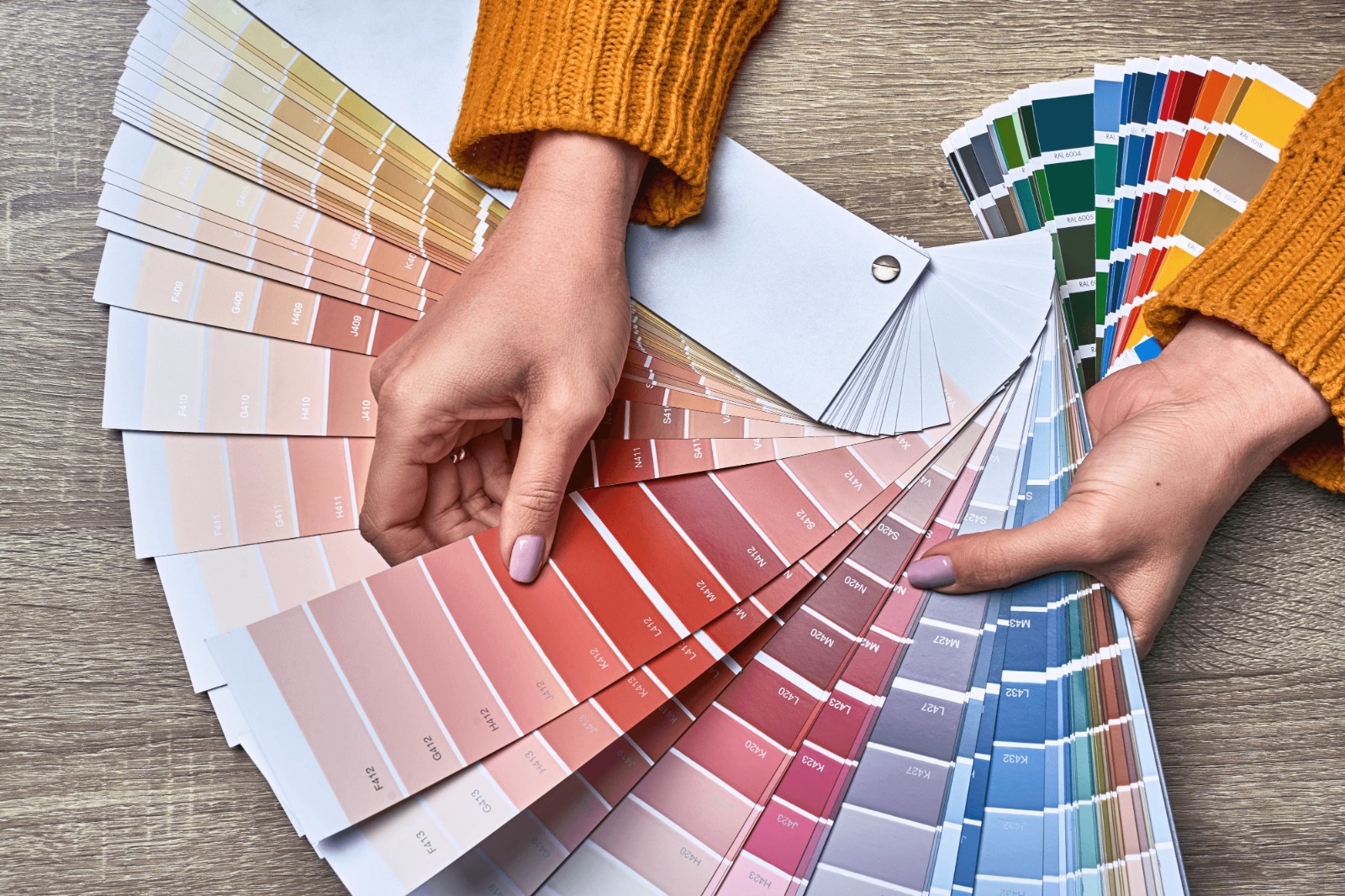
The Science of Color in Interior Design – A Complete Guide to Color Selection and Psychological Impact
Introduction: Why Are Colors Fundamental to Successful Design?
Colors are not merely aesthetic choices but psychological tools that influence mood, productivity, and even social interactions. In interior design, color selection plays a pivotal role in defining a space’s identity, whether it’s a home, office, or retail store. This comprehensive guide explores color theory, coordination principles, and the latest 2024 trends.
- Color Psychology and Its Impact on Interior Spaces
1.1 Warm Colors (Red, Orange, Yellow)
- Psychological Effect: Stimulates energy and social interaction but may cause tension if overused.
- Best Uses:
- Living rooms (for a cozy atmosphere).
- Kitchens (to stimulate appetite).
- Commercial spaces (to attract attention).
1.2 Cool Colors (Blue, Green, Purple)
- Psychological Effect: Promotes calmness and focus but can feel emotionally cold if misapplied.
- Best Uses:
- Bedrooms (for relaxation).
- Home offices (to enhance productivity).
- Bathrooms (for a clean, refreshing feel).
1.3 Neutral Colors (Gray, Beige, White, Black)
- Role: Provides a balanced backdrop for other colors to shine.
- Usage Tips:
- Combine different shades (e.g., light and dark gray) to avoid monotony.
- Add colorful accessories to enliven neutral spaces.
- Color Coordination Theories in Design
2.1 Complementary Colors
- Principle: Use opposite colors on the wheel (e.g., blue and orange).
- Advantages: Creates bold, eye-catching contrast.
- Caution: Use sparingly to avoid visual fatigue.
2.2 Analogous Colors
- Principle: Select three adjacent colors (e.g., green, teal, and blue).
- Advantages: Harmonious and soothing.
- Ideal For: Bedrooms, therapeutic spaces.
2.3 Triadic Colors
- Principle: Choose three evenly spaced colors (e.g., red, yellow, blue).
- Advantages: Balances vibrancy and harmony.
- Tip: Let one color dominate and use others as accents.
- Latest 2024 Color Trends
3.1 Colors of the Year: “Mustard” and “Soft Lavender”
- Why They’re Popular: Reflect a desire for warmth after years of cool tones.
- How to Use:
- Mustard walls with natural wood furniture.
- Lavender accents in neutral living rooms.
3.2 The Return of Metallics
- Rose Gold: For modern elegance.
- Brushed Silver: For an industrial chic look.
3.3 Organic Tones
- Terracotta: For a natural vibe.
- Olive Green: For sustainable design.
- Practical Tips for Choosing Colors
- Test samples under different lighting: Colors shift from day to night.
- Start with one room: Avoid overwhelming changes.
- Use bold colors in accessories first: E.g., throw pillows or curtains.
Conclusion: Color as Art and Science
Selecting colors is a creative process requiring psychological and technical understanding. By following these guidelines, you can transform your space into a reflection of your personality and enhance your quality of life.

0 comments